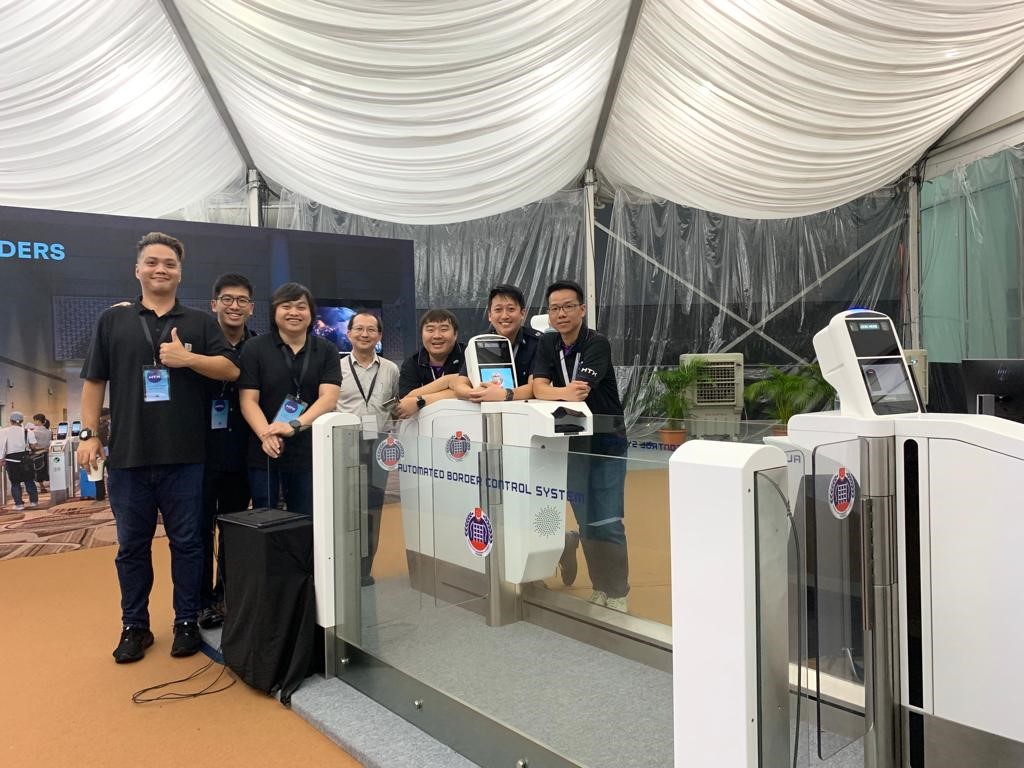Every layer we add increases our security depth. There will never be a single layer which can detect everything, and even with multiple layers, someone with enough dedication and resources will still get through. Layering on more mechanisms will help us delay, deter and deny that one case from happening as late as possible.
In his current appointment at HTX, Weiyang has been working with counterparts from ICA and HTX’s Immigration & Checkpoints Programme Management Centre, on the implementation of iris and facial recognition biometrics in their next-generation immigration clearance system. When fully implemented, the New Clearance Concept (NCC) will mean contactless screening for travellers at Singapore’s immigration checkpoints.

Weiyang (third from right) with his colleagues at HTX’s official launch, where the NCC’s contactless clearance was showcased (Photo: Wong Weiyang)
Weiyang sees advanced and multi-modal biometrics as additional layers in Singapore’s defences. “Every layer we add increases our security depth,” he said, “There will never be a single layer which can detect everything, and even with multiple layers, someone with enough dedication and resources will still get through. Layering on more mechanisms will help us delay, deter and deny that one case from happening as late as possible.”
Weiyang’s work at MHA has taken him around the world. For example, he did a training stint in Israel where he learned about their utilisation of facial biometric technology and the impact to their operations. Such global exposure is important given the rapid pace of change of technology and usage landscape. As Weiyang points out, one of the major challenges with his work is “accepting that whatever technology deployed is obsolete by the time it hits the field and trying to predict the next wave still being conceptualised in labs.”
This rapid pace of technological change, for Biometrics especially, is also accompanied with ethical concerns, since, as Weiyang observes, “every technological leap in our history has had unexpected consequences,” and one of the important challenges for scientists and engineers is to try to predict these unexpected consequences.
In the case of biometrics, Weiyang predicts that within a decade, “we will be able to identify and verify people from afar, not just by your face and whether you want to be identified or not.” In addition, in this future scenario, “your biometric identity can also be stolen and used without your knowledge, and the only way you can then ‘change your password’ is to change who you physically are.”
In such ways, Weiyang warns that “dystopian visions of the future, depicted as fiction from the past, are slowly becoming reality.” The challenge for Weiyang and his colleagues is to “find ways to prevent and mitigate” these dangerous consequences while still allowing Singapore to fully benefit from these same technological advances.